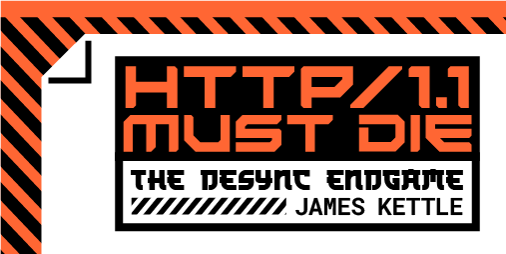
HTTP/1.1 must die: the desync endgame
Upstream HTTP/1.1 is inherently insecure and regularly exposes millions of websites to hostile takeover. Six years of attempted mitigations have hidden the issue, but failed to fix it.
This paper introduces several novel classes of HTTP desync attack capable of mass compromise of user credentials. These techniques are demonstrated through detailed case studies, including critical vulnerabilities which exposed tens of millions of websites by subverting core infrastructure within Akamai, Cloudflare, and Netlify.
I also introduce an open-source toolkit that enables systematic detection of parser discrepancies and target-specific weak spots. Combined, this toolkit and these techniques yielded over $200,000 in bug bounties in a two-week period.
Ultimately, I argue that HTTP request smuggling must be recognized as a fundamental protocol flaw. The past six years have demonstrated that addressing individual implementation issues will never eliminate this threat. Although my findings have been reported and patched, websites remain silently vulnerable to inevitable future variants. These all stem from a fatal flaw in HTTP/1.1 which means that minor implementation bugs frequently trigger severe security consequences. HTTP/2+ solves this threat. If we want a secure web, HTTP/1.1 must die.
HTTP/1.1 has a fatal, highly-exploitable flaw - the boundaries between individual HTTP requests are very weak. Requests are simply concatenated on the underlying TCP/TLS socket with no delimiters, and there are multiple ways to specify their length. This means attackers can create extreme ambiguity about where one request ends and the next request starts. Major websites often use reverse proxies, which funnel requests from different users down a shared connection pool to the back-end server. This means that an attacker who finds the tiniest parser discrepancy in the server chain can cause a desync, apply a malicious prefix to other users' requests, and usually achieve complete site takeover:








